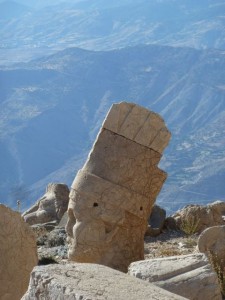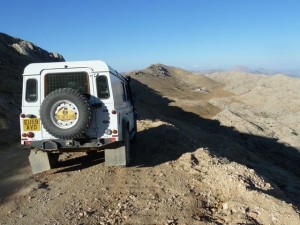The toast last night was “Here’s to bitumen! May it stay in its proper place!” And we raised a glass of fine Chablis, thoughtfully provided to us by Paul and Stuart Foley who, when not stocking our little car fridge with Snickers, Toblerone and Cuban cigars, take superb care of Brunhilde when she’s in dry dock.
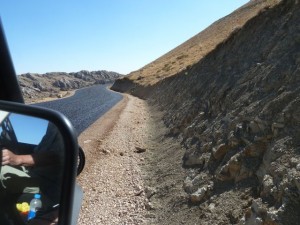
The reason for the toast was an unfortunate strip of oozing, gooey black pitch newly laid on the dirt road which led to our modest lodge at 6,000 feet altitude on the windswept Turkish steppe. Poor Brunhilde’s nether regions are now coated with the black, sticky stuff and there’s nothing we can do about it. Except to drink wine, that is.
The road up till then had been an ideal sweep of tarmac over high, bare dry hills, through modest villages, with swatches of green now and then showing where a stream provided enough water along the valley bottom for fields and gardens to be planted. So it was a shame to end the drive feeling both relief that we’d finally arrived and dismay at the condition of our car.
Putting aside car matters for a moment, i can tell you that far below us sprawl gorgeous blue lakes, while above us is the rubbled summit of Nemrut Dagi (Dag being the Turkish word for mountain. This reminds me to urge a must-read of The Forty Days of Musa Dag, a classic of literature by Franz Werfel, about the genocide of Armenians in 1915). We are here, hair frizzled and fleece jackets removed from the bottom of the suitcase on the expectation of a chilly wind tonight. We’re just back from that rubbly summit, where rest a series of immense carved stone heads.
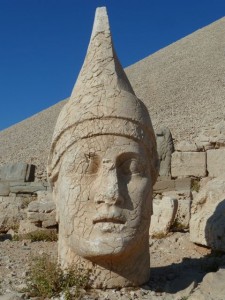
They’re in the image of Zeus, Tyche and other gods, plus lions and eagles, and have been sitting their in poised splendor since 50BC. One King Antiochus placed them there (actually, had his slaves place them) and included a graven image of himself amongst the godly statuary, urging his subjects to make the steep climb to the summit to worship him and whatever else was there that took their fancy.
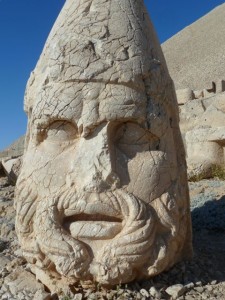
The heads are strikingly carved, and I figure it’s because of the dry climate that they don’t seem to have eroded much, though when the heads tumbled off the stone bodies, they did smash their lips and noses. The sky these days is a cloudless bright blue, and with a steady wind blowing and the sun reaching low in the sky, it was quite a magical spot to be.
Our driving so far have been long, hot and rather unremarkable, so it’s fortunate that each day we have managed to include a little something interesting or special. By the time you read this we will have entered Iran.









